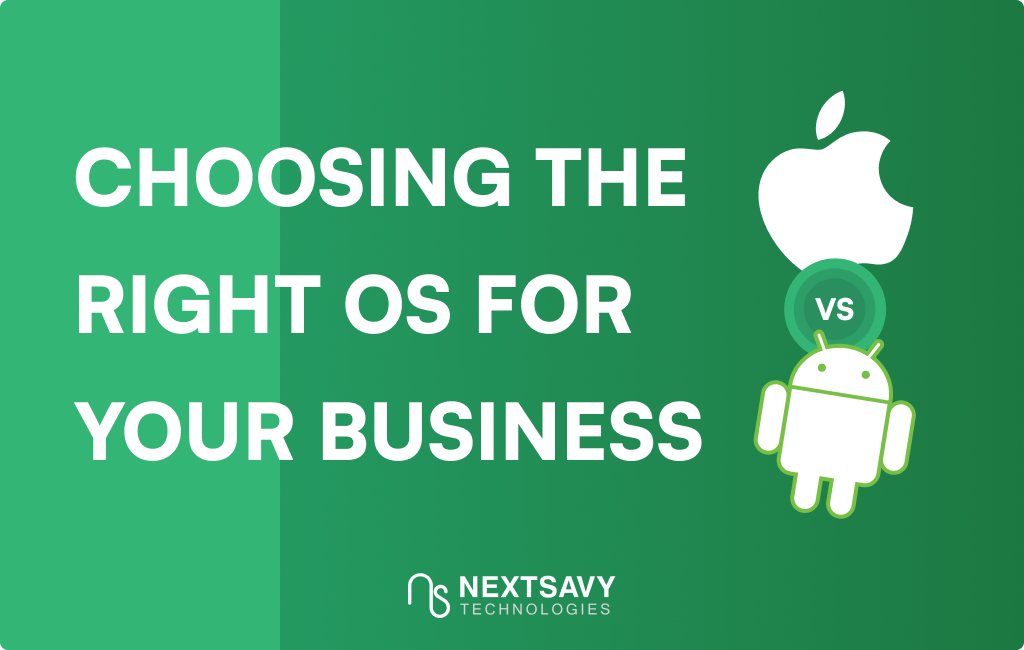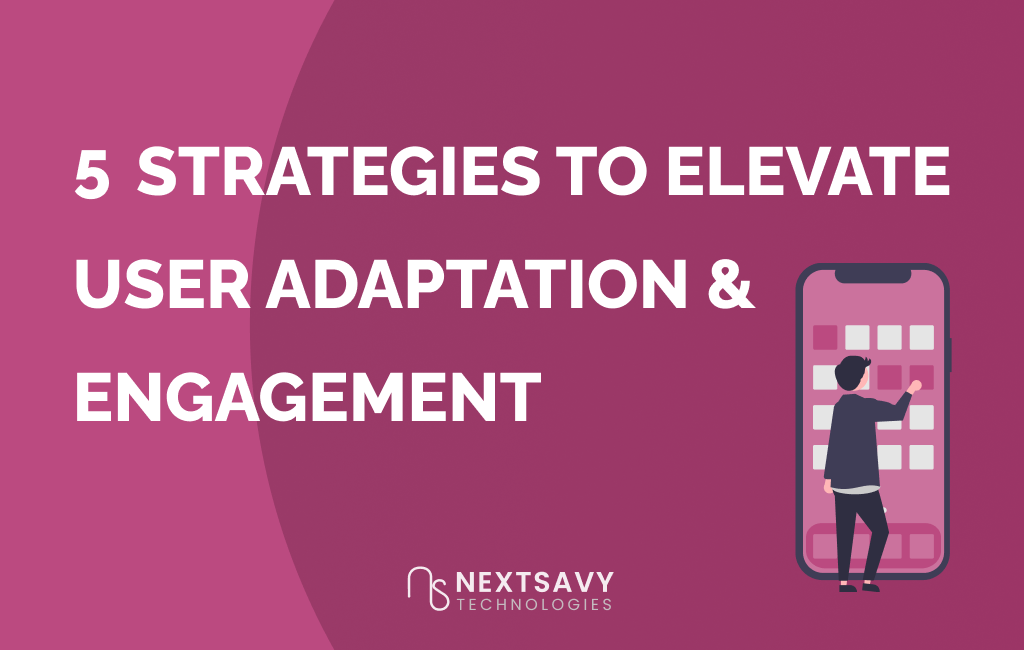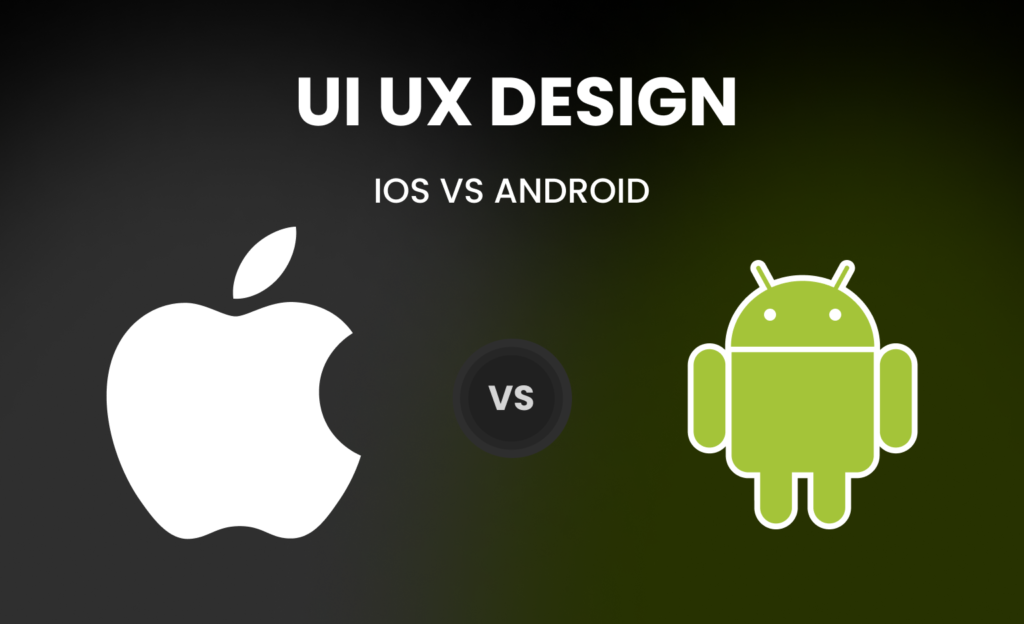September 1, 2023
 How to choose the right Mobile App Architecture?
How to choose the right Mobile App Architecture?

Before choosing the right mobile app architecture for your project, let’s understand mobile app architecture.
In this digital boom period, mobile apps have become the epicenter of successful business strategies. With the increasing number of smartphone users, businesses are leveraging mobile apps to reach a wider audience. These mobile apps not only enhance customer engagement but also offer opportunities for monetization and brand recognition.
But that makes everyone curious about Is every mobile app successful? Is it enough to just create and launch a mobile app? In an era where every half an hour a new app is released, what will it take to make a mobile app stand out from the competition? Ultimately, the above questions lead to a discussion on following
What makes a mobile app stand out from the competition?
A well-designed mobile app architecture and tech stack ensure an efficient, scalable, and secure user experience. It also enables future enhancements and easy integration with other systems.
What is Mobile App Architecture?
Mobile app architecture is the structure and design of a mobile application. It comprises layers that make up the app: the user interface, data storage, and overall functionality. The following are the layers of steps involved in the process:
Layers of Mobile app architecture
The Business Layer
This layer focuses on how businesses represent themselves to end users. This layer comprises business components, workflows, and entities divided into two layers: Service and Domain Models. The Service Layer consists of a common set of application functions that will be available to clients and end users in the Domain Model. It shows how the mobile app works and looks into the knowledge and expertise linked to specific problem areas.
The Presentation Layer
As the name suggests, this layer entirely focuses on how to present the application to end-users. It includes the components of the user interface and UI processes, which include themes, colors, and fonts, as well as the overall layout and navigation of the application. For example, if the mobile app is being developed for iOS devices, the developers need to ensure that the presentation layer is optimized for iPhones or iPads, depending on the target audience.
The Network Layer
The network layer manages internet-based communication between mobile apps and external resources. It facilitates data interchange between the app and backend services such as databases, APIs, and other remote systems. The network layer’s responsibilities include connection establishment, data encryption and decryption, ensuring reliable data transfer, managing network protocols, and caching data to optimize app speed.
The Data Layer
The data layer acts as an intermediary between external resources and other app layers. Its primary function is to collect raw data from various sources, like databases, cloud servers, or APIs, and then transfer it to the upper layers, and vice versa.
But the data layer is highly vulnerable and sensitive, so it should have ample security in mobile app architecture. To protect sensitive data, implement encryption techniques, establish access controls, and conduct regular security audits. Regularly update the data layer to identify potential vulnerabilities. By prioritizing security in mobile app architecture minimizes the risk of data breaches and unauthorized access, safeguarding sensitive information within raw data.
The architecture used in mobile application development
MVC (Model-View-Controller)
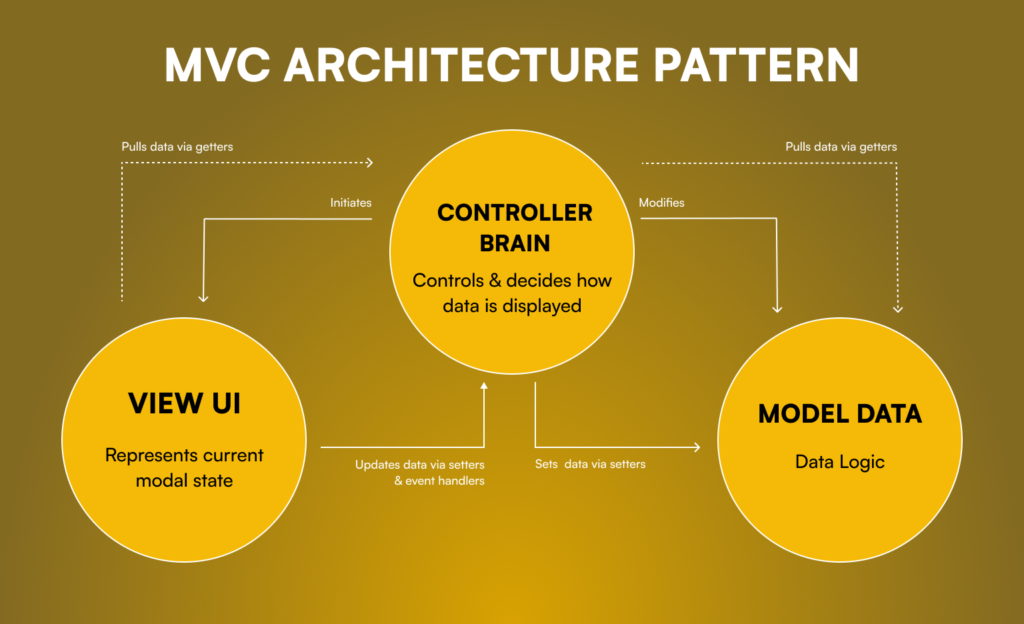
• This is one of the oldest and most widely used mobile app architectural patterns.
• Model: Manages the data as well as business logic.
• View: Handles the user interface elements.
• Controller: Acts as an intermediary between the Model and View, managing user input and updating the Model and View accordingly.
• It is commonly used in both Android (with the use of Activities, Fragments, and Views) and iOS (with the use of UIViewControllers and UIViews).
MVVM (Model-View-Viewmodel)
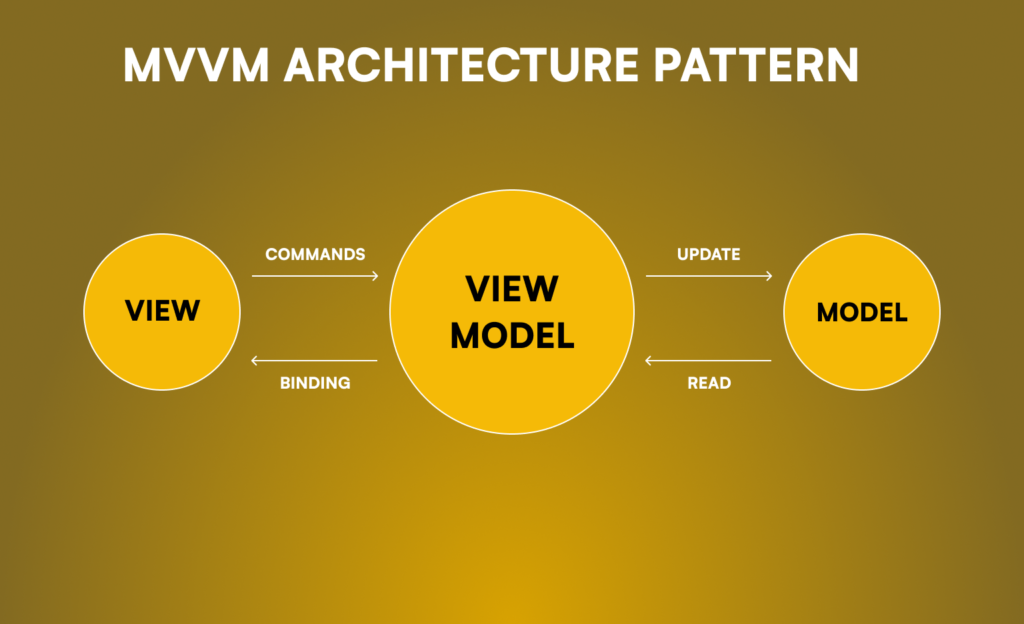
- Model-View-ViewModel is a development of MVC that divides concerns further and improves testability.
- Model: Manages the data as well as business logic.
- View: Handles the user interface elements.
- ViewModel: Acts as an intermediary between the Model and View, exposing data and commands that the view binds to.
- Popular in Android development, especially with frameworks like Android Architecture Components, and also used in iOS development with frameworks like SwiftUI.
Flutter Bloc Architecture
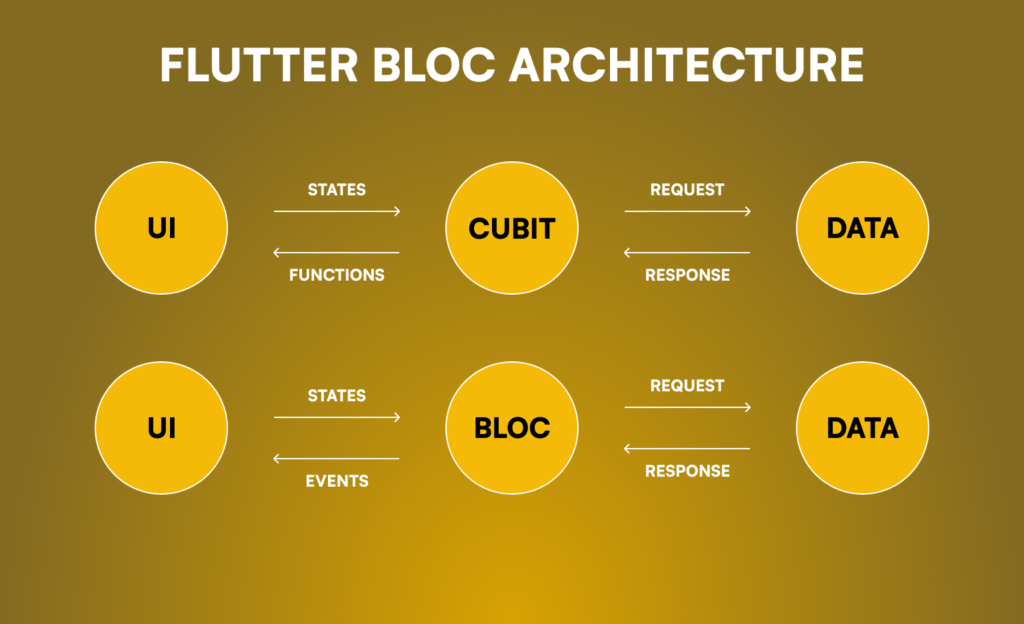
- The most popular framework for building cross platform mobile applications. Want to know more about cross platform development and benefits? Check out our guide for benefits of cross platform development
- It can use various architectural patterns to structure an application.
- It utilizes the BLOC (Business Logic Component) pattern to manage the flow of data and events.
- It helps in managing state, UI updates, and business logic separately.
- It is popular for its suitability in reactive programming and maintaining clean code.
Redux Architecture (for React Native and Flutter)
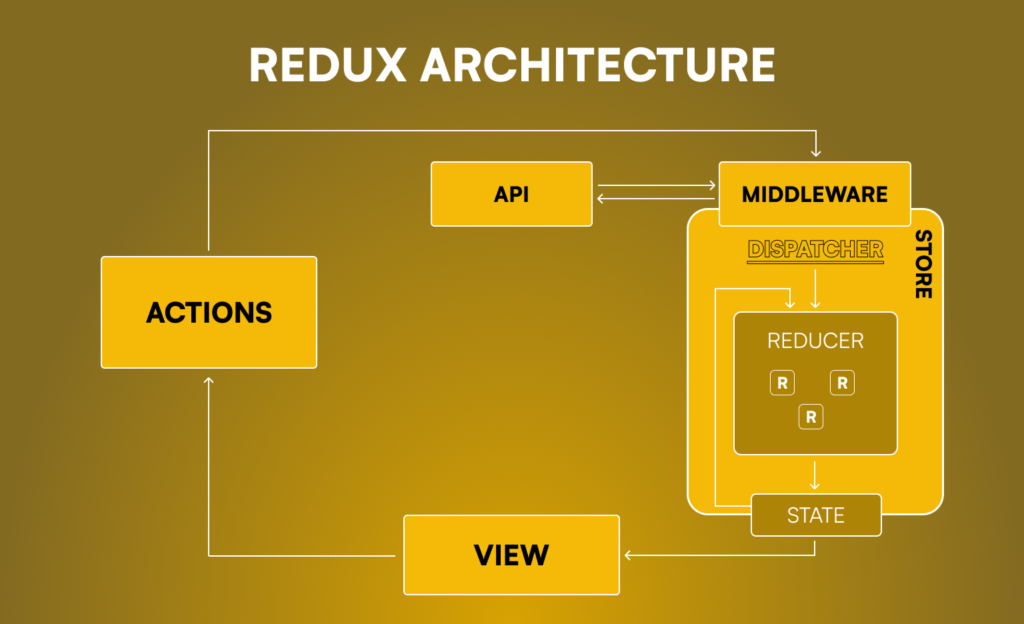
- Redux is a predictable state container pattern commonly used in web development.
- It is adapted for mobile development in frameworks like React Native and Flutter.
- It centralizes the app’s state management and provides a clear flow for data changes.
- It is popular for applications with complex data flows and state management needs.
VIPER Architecture (iOS)
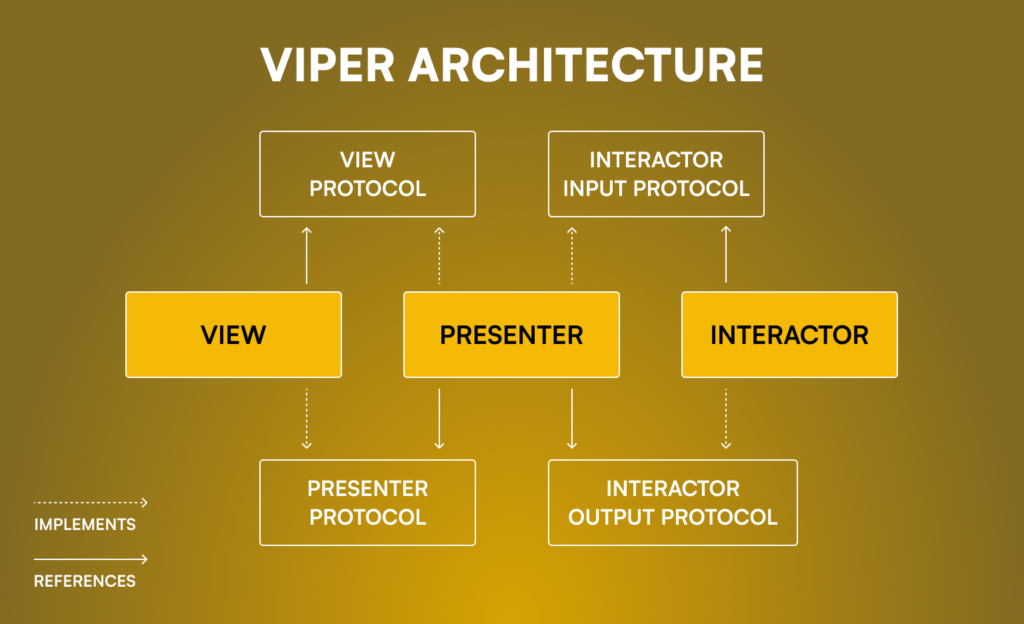
- VIPER stands for View-Interactor-Presenter-Entity-Routing.
- It is used for iOS application development.
- VIPER enforces strict separation of concerns and modularity, making the application more scalable and maintainable.
- It is particularly useful for larger projects and teams.
Above are the most useful and important architectures used in mobile application development. So now that we are aware of the layout and types of app architecture, the next important question on which this blog is based is how to choose the right mobile app architecture for your project.
Factors that contribute to a successful mobile app architecture
To ensure a triumphant mobile app architecture, it is crucial to take into account crucial factors such as efficiency, scalability, maintainability, and user friendliness. Here are some key factors that contribute to a successful architecture for mobile applications:
UX and UI design
- The ui/ux design should be intuitive and user friendly. The foundation of a mobile app architecture is its ui/ux design. Check out our ultimate guide for UI UX designing for mobile apps
- It should have smooth navigation that ensures users can easily find what they are looking for.
- It should have a clear information hierarchy that helps them understand the content and its organization.
- It should have consistent design elements, and branding for creating a recognizable brand identity. This includes using the same color palette, typography, and visual style across all marketing platforms.
- The design needs to be responsive to ensure user access and navigation on desktops, tablets, and mobile devices of various screen sizes.
Scalability and Performance
- A well-structured codebase is needed that allows for easy scalability and performance.
- ‘GIT’ is the best source code management tool out there that can allow developers to efficiently track changes, collaborate with team members, and easily revert to previous versions of their code.
- It enables developers to add new features, fix bugs, and optimize performance without disrupting the existing functionality.
- Minimization of network requests is needed to fetch data from servers, thus minimizing latency and improving loading times.
- Efficiently compressing and caching data can optimize data transfers, conserve bandwidth, and reduce user usage costs.
Modularity and Maintainability
- Modularity promotes code reusability and scalability by allowing developers to break down a mobile app into smaller, independent modules that can be developed and tested separately.
- Maintainability refers to the ease with which a mobile app architecture can be maintained and updated over time.
- It includes factors such as clean code structure, documentation, and the availability of tools for debugging and troubleshooting.
Security and Privacy
- Security and privacy is essential as they ensure the protection of user data and prevent unauthorized access.
- A robust mobile app architecture should incorporate encryption techniques and secure authentication methods to safeguard sensitive information.
- A right app architecture should prioritize user consent and provide transparent data handling practices to maintain privacy standards as well.
Third Party Integrations
- There should be careful selection and integration of third-party libraries and APIs.
- Choose reputable providers, services that have low latency and offer good response times to prevent slowing down your app’s overall performance.
- Regular updates of third-party components to stay up-to-date with security patches and new features.
- Implement robust error-handling mechanisms to handle cases where the third-party service is temporarily unavailable or returns unexpected results.
Cross Platform Compatibility
- It is crucial for organizations that want to reach a wide user base across different devices and operating systems.
- React Native and Flutter frameworks allow developers to write code once and deploy it on multiple platforms, saving time and resources.
- The compatibility of each framework with specific app requirements and performance expectations requires a thorough evaluation of its pros and cons.
Feedback and Analytics
- The integration of analytics tools is crucial for businesses to collect user behavior data, providing valuable insights into user interactions with their products or services.
- Also, tracking user engagement metrics like session duration, retention rates, and in-app purchases helps developers understand user interactions with the app.
- Developers can identify roadblocks and areas for improvement by analyzing app performance metrics like load times, crashes, and response rates.
Regular Updates and Maintenance
- Regularly updating the mobile app architecture is crucial for developers to maintain the app’s relevance and user-friendliness.
- The developers can ensure the app’s efficiency, security, and compatibility with the latest devices and operating systems by continuously improving mobile app architecture.
Above are the most common factors that contribute to a successful mobile app architecture. There are more factors, such as business requirements, target audience, offline capabilities, platform considerations, optimized resource usage, documentation and collaboration.
Remember that the specific architecture choices will depend on the nature of your mobile application, the client’s needs, your team’s expertise, and your development goals. It’s essential to strike a balance between these factors to create an architecture that meets both user expectations and technical requirements.
We at Nextsavy Technologies are tailored to meet your specific needs. Our experienced members are well-versed in the latest technologies and trends, ensuring that your mobile application architecture is not only visually appealing but also highly functional. From concept to deployment, we handle every aspect of the mobile development process with utmost professionalism and attention to detail. Whether you need a simple app for your business or a complex solution for a large-scale project, we have the expertise to deliver exceptional results.
FAQ’s
Mobile app architecture is the structure and design of a mobile application. It comprises layers that make up the app: the user interface, data storage, and overall functionality.
Mobile app architecture typically consists of three layers: the data layer, the business layer, and the presentation layer, each of which plays a critical role in the app’s functionality.
There are various reasons, such as that it helps connect a wider audience, attract new customers, increase brand presence, increase traffic and engagement, and build trust. Check our guide on how mobile apps can benefit your business
An ideal mobile app architecture is one that follows the principles of clean architecture. It is flexible, allowing for easy updates, easily scalable, user friendly that allows users to easily navigate and interact with its features.
VIPER architecture is commonly used in iOS development when the project requires a high level of modularity, scalability, and testability. It is particularly beneficial for large-scale applications with complex business logic and multiple modules that need to be developed and maintained by different teams.
